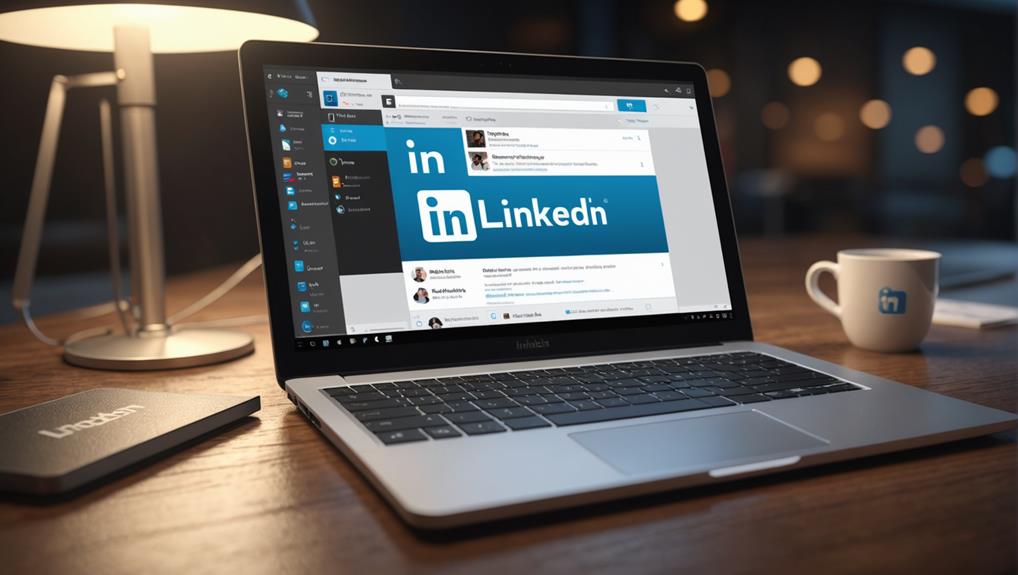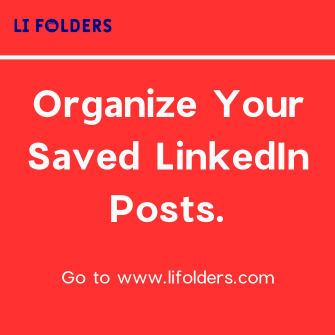
If your LinkedIn message seems to have vanished, you should first check your 'Sent' messages by navigating to the messaging area of your homepage. Sometimes, a delay in message delivery can occur due to network issues or server instability. Also, double-check your privacy settings, as these can restrict whether your messages are sent or received. If you're still facing issues, consider tweaking your notification settings under 'Settings & Privacy' to ensure you're informed about all message activities. Furthermore, understand any potential account restrictions that might be hindering your messaging capabilities. Exploring these areas will help you pinpoint the cause better.
Checking Your Sent Messages

To check your sent messages on LinkedIn, simply navigate to the messaging area from your homepage. You're part of a vast community of professionals, and keeping in touch is key to fostering those connections that make you feel like you belong. When you're in your messaging area, you'll see an option for 'Sent', which lets you review all the communications you've initiated.
Seeing your sent messages allows you to track conversations and ensures you're not missing out on any replies. It's like keeping a diary of your professional interactions, helping you stay engaged with your network. This record is crucial, especially when you're waiting for a response or need to follow up. You won't feel left out of the loop; instead, you'll be right in the center, aware of all your interactions.
Understanding LinkedIn Notifications
Once you've mastered checking your sent messages, it's crucial to understand how LinkedIn notifications work to stay on top of your networking activities. Notifications are your gateway to knowing when others are reaching out or engaging with you, making you feel part of the vibrant LinkedIn community.
LinkedIn tailors notifications to keep you informed about messages, job alerts, endorsements, and updates from your network. You'll see these alerts either via the bell icon on your profile or through your email, depending on your settings. It's like having a personal assistant who keeps you looped in so you never miss out on opportunities to connect or collaborate.
To make the most of this feature, customize your notification settings. Go to the 'Settings & Privacy' menu, find the 'Communications' tab, and adjust your preferences for email, mobile, and on-site messages. This way, you control what updates you receive and how often, ensuring that you're always in the loop but not overwhelmed.
Common Messaging Errors

Many users occasionally encounter errors when sending messages on LinkedIn. You're not alone if you've faced this frustrating issue. It's a common hiccup in the digital networking world, where everyone seeks to connect and belong.
One typical error is the "Failed to send" notification. This can occur if LinkedIn's server is temporarily down or experiencing heavy traffic. You might also see this if you're trying to send a message to someone who has changed their privacy settings or blocked you, though that's more about boundaries than technical glitches.
Another frequent problem arises when messages don't appear to send immediately. Before you hit resend, wait a bit! Sometimes, there's a delay in the transmission due to network issues. You don't want to flood someone's inbox unintentionally – it might come off as pushy, and that's the last thing you need when you're trying to make a positive impression.
Also, ensure your internet connection is stable. A shaky connection can cause messages to fail repeatedly, leaving you feeling disconnected from your network. Remember, maintaining professional relationships is crucial, and overcoming these small tech barriers can help you stay integrated and active within your community.
Privacy Settings Impact
You might not realize how privacy settings on LinkedIn can directly affect whether your messages reach their intended recipients. When you're part of this vast network, it's easy to feel like just another profile in the sea, but your settings are key to crafting your space and connections. If you've set your account to strict privacy modes, others may not be able to send you messages unless you've initiated contact or connected. This exclusivity can make you feel more secure, yet it might also isolate you from potential opportunities.
Similarly, the people you're trying to reach might have their privacy shields up. They might've restricted their incoming messages to connections only, which means your attempts to reach out will go unnoticed if you're not already linked. It's crucial to understand this mechanism to avoid feeling left out of the loop. It's not just about sending messages; it's about weaving into the community fabric, finding your niche, and making those essential connections that drive your professional life forward. So, take a moment to review your settings and consider how open or closed you want your LinkedIn doors to be. This balance will help you not only reach others but also manage who can reach you, fostering a sense of belonging and security in your professional circle.
Possible Account Restrictions

Account restrictions might be hiding your LinkedIn messages from desired contacts. If you've found yourself feeling a bit isolated or cut off from your professional circle, it could be due to limits placed on your account, often without clear warning. You're not alone in this. Many users experience similar issues when unexpected restrictions impact their ability to connect and engage within their network.
It's crucial to understand that these limitations can arise from various actions. Perhaps you've sent a large number of connection requests or messages in a short period, which can sometimes be interpreted by LinkedIn as spam-like behavior. This is particularly frustrating because your intention is simply to expand your network and engage with peers.
Tips for Effective Messaging
How can we craft messages that not only reach our LinkedIn contacts but also engage them effectively? It's all about making your connections feel valued and included. Start by personalizing your messages. Use their name, reference a recent post they've shared, or mention a mutual connection. This shows you're genuinely interested in them, not just what they can offer you.
Keep your tone friendly and professional. You're aiming to build a relationship, not just close a deal. Ask questions that invite a response; this isn't just about you sharing your thoughts or achievements. It's about fostering a two-way conversation. Think about what they're interested in and how you can contribute to their goals.
Be concise and to the point. Your contacts are likely just as busy as you are, so respect their time. A clear, direct message that gets to the heart of what you want to discuss is more likely to be well-received than a long-winded pitch.
Lastly, follow up if you don't hear back within a week. A gentle reminder can help keep the conversation alive without being pushy. Remember, it's about creating a sense of community and mutual support, not just ticking a networking box.
Conclusion
You've now navigated through the maze of LinkedIn messaging, from checking your sent messages to understanding how privacy settings and account restrictions might affect your communication. Remember, effective messaging is key. Keep your messages clear, professional, and concise to ensure they hit the mark. If you're still facing issues, double-check your settings or consider reaching out to LinkedIn support for extra help. Stay connected and keep networking smartly!






